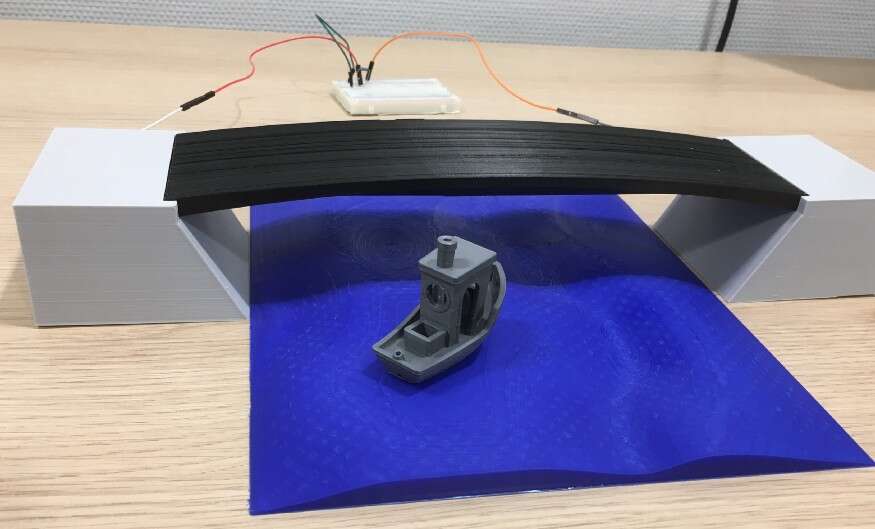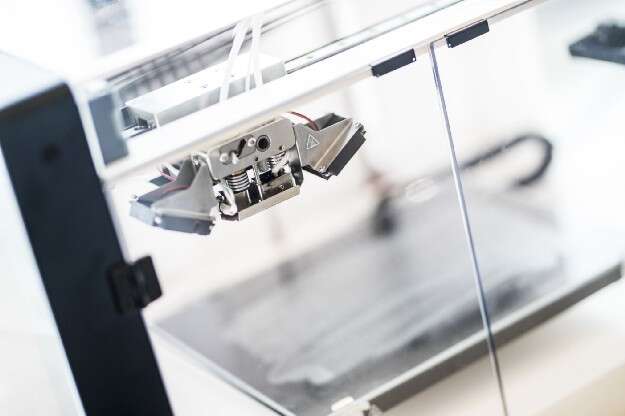What is self-sensing?
Self-sensing is the ability of a material to sense its own condition, the material itself is used as a sensor. Polymer-matrix composites, containing continuous carbon fiber, are known materials that have self-sensing capabilities based on measurable changes in electrical resistance of the continuous fibers. The practical importance of such products is in structural health monitoring in airplanes or critical parts of constructions like bridges. Usually, self-sensing material is made with the traditional composite manufacturing techniques that is the complex several-stages process made by the special equipment.
Brightlands Materials Center is combining the self-sensing of continuous fiber with fabrication of the composites by additive manufacturing to make it more effective.
Continuous fiber 3D printing opens new horizons
Additive manufacturing with continuous fibers enables very precise positioning and orientation of carbon fibers. The carbon fibers are placed at chosen locations inside the product that form an integral part of the structure. That means that the carbon fiber “sensors” are located where they are needed, and multiple fibers could form a range of sensors throughout the part.
The concept was proven by monitoring deformation in a scale model of a pedestrian composite bridge and in a simple bending beam.



Both were printed with the Anisoprint Composer A4 composite 3D printer which allows choosing any thermoplastic polymer as a matrix and, the most important, full freedom of the carbon fiber layout. This is crucial for sensing because carbon fiber has to stick out of the part to be able to make connections to the monitoring electronic hardware.
More precise 3D printing results
3D printing sometimes requires several attempts and testing iterations to get the part with the required parameters. 3D printed self-sensing composites can help to gather information about the real use circumstances. That’s important for the design and prototype phase of new products or in replacing spare parts that are not available anymore. During a testing period the self-sensing 3D printed part registers the real dynamics and forces that a product needs to withstand. This gives designers and engineers a clearer understanding of what requirements the 3D printed parts will have to meet. As a diagnosis tool 3D printed self-sensing orthosis or prosthesis might guide patients and provide valuable information to doctors, regarding stress distribution and movement patterns.
About companies
Brightlands Materials Center is an independent research center founded by TNO and Province of Limburg. It supports innovation in industry and has a strong application focus. We offer dedicated contract research and participation in our research roadmap on 3D printed self-sensing composites.
Anisoprint is an inventor of anisoprinting — the technology for design and production of optimal composite structures through the new way of continuous fiber 3D printing — Composite Fiber Co-extrusion. The company manufactures 3D printers, materials (carbon, basalt) and software for producing anisoprinted composite parts to help scientists solve old research problems in a new more effective way and manufacturing companies reduce their costs.